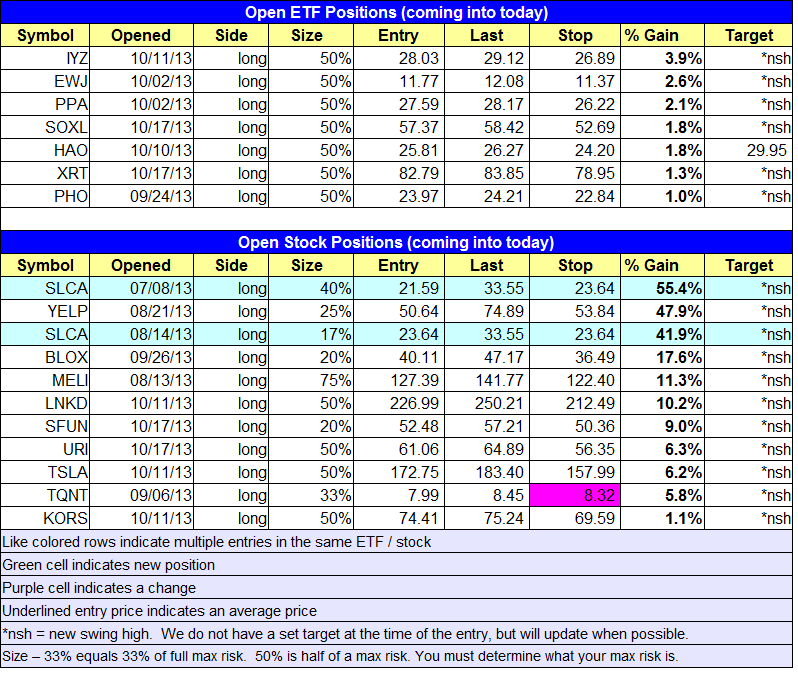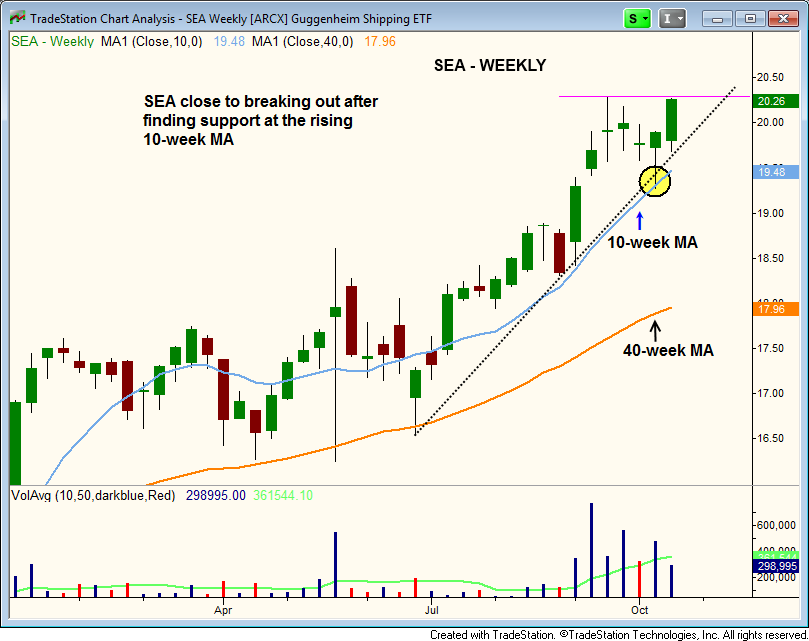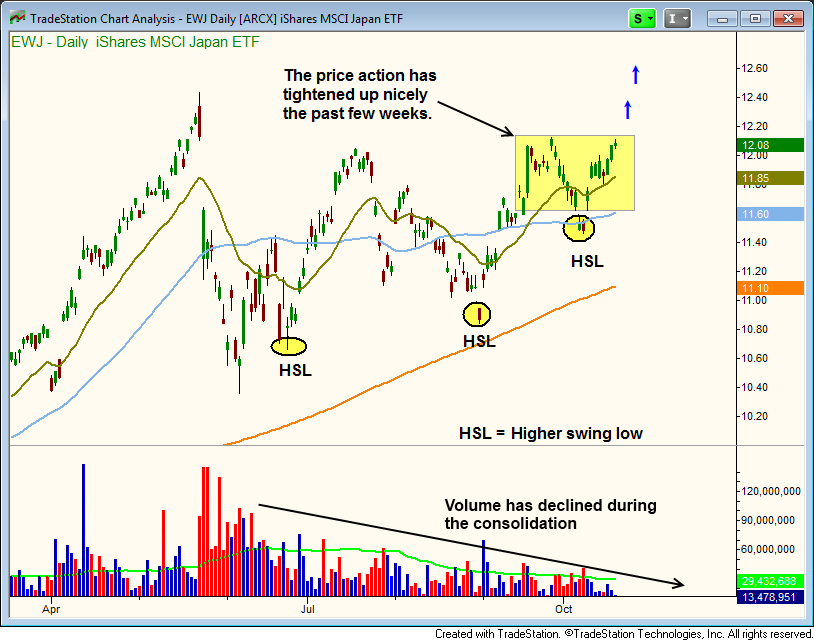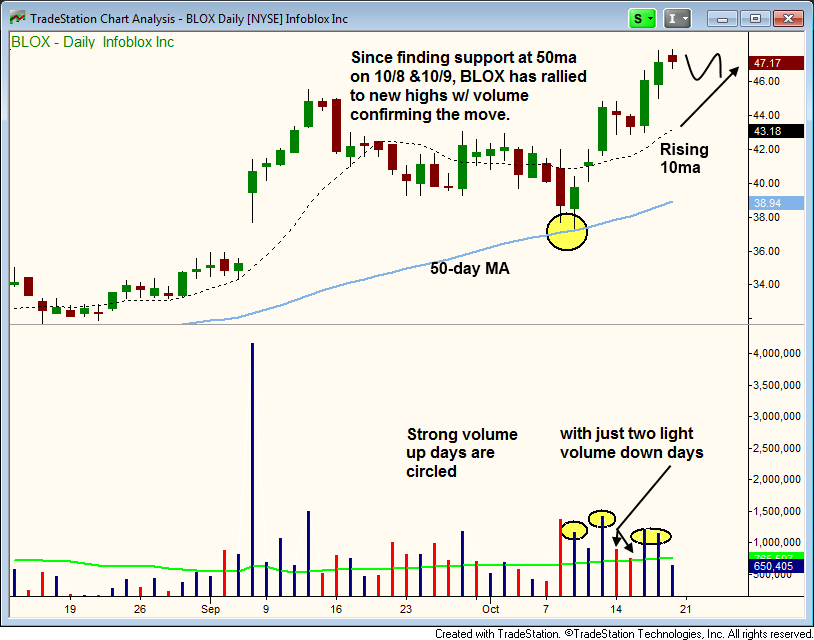market timing model: Buy
Current signal generated on close of September 9.Portfolio exposure can be anywhere from 70% to 100% long or more, meaning that conditions are strong enough to be on margin.
Past signals:
- Neutral signal generated on close of August 15
- Buy signal generated on close of July 11
- Neutral signal generated on close of July 5
- Sell signal generated on close of June 24
today’s watchlist (potential trade entries):

Having trouble seeing the open positions graphic above? Click here to view it directly on your web browser instead.
open positions:
Below is an overview of all open positions, as well as a report on all positions that were closed only since the previous day’s newsletter. Changes to open positions since the previous report are listed in pink shaded cells below. Be sure to read the Wagner Daily subscriber guide for important, automatic rules on trade entries and exits. Click here to learn the best way to calculate your share size.

Having trouble seeing the open positions graphic above? Click here to view it directly on your web browser instead.
closed positions:

Having trouble seeing the closed positions graphic above? Click here to view it directly on your web browser instead.
ETF position notes:
- No trades were made.
stock position notes:
- $ONVO gapped above our trigger by more than 1.3% on the open, so the trade was automatically canceled. If you are long $ONVO, please use the protective stop listed in Friday’s report.
ETF, stock, and broad market commentary:
Two weeks ago, the broad market averages closed with a bullish reversal candle on the weekly chart after a nasty shakeout. Last week, the averages followed through to the upside, setting new 52-weeks in the NASDAQ Composite, and new all- time highs in the Russell 2000, S&P 400, and S&P 500. After breaking down below the 50-day MA by as much as 2.0%, the S&P 500 has made quite a comeback the past two weeks.
In terms of market leadership, nothing has changed, as the NASDAQ and Russell 2000 both gained more than 1.0% on Friday while the Dow Jones rallied only 0.2%. As mentioned last week, although the Dow is relatively weak, there is enough strength and momentum in the market (from leadership stocks breaking out) to produce a typical six to eight week rally.
After breaking out from a base around $18 and stalling just above $20, Guggenheim Shipping ETF ($SEA) pulled back to and found support at the rising 10-week MA. Last week’s price action followed through on the previous week’s bullish reversal candle, but stopped just shy of breaking out to new highs. Whether $SEA breaks out this week or in a few weeks from now, there is very little overhead above $20, so once it clears that level it could potentially run to the next major resistance level around $25.

We remain long iShares MSCI Japan ETF ($EWJ) from our pullback entry in early October around $10.70. Although $EWJ has failed to breakout, the price action continues to tighten up in the base, especially over the past few weeks above the 50-day MA. Note the higher swing lows during the base as well. The combination of higher swing lows and tight price action is what we typical look for in basing patterns. We also like the dry up in volume, which is a bullish sign, as traders take $EWJ off their radar because of the choppy action. A breakout above the four week high should quickly lead to new 52-week highs.

On the stock side, $ONVO buy setup did not trigger due to the 1.3% gap rule. If you are long $ONVO, you can continue to hold with the stop listed in last Friday’s report. With most leadership stocks extended in the short-term, our weekend scans did not turn up much in the way of actionable buy setups. Our job right now is to remain patient and wait for new breakout or pullback entries to emerge.
For example, rather than chasing $BLOX to add to an existing position, we can sit tight and wait for the rising 10-day MA to catch up and provide a lower risk entry on weakness. The chart below shows the ideal price action during a short-term pullback the rising 10-day MA.
